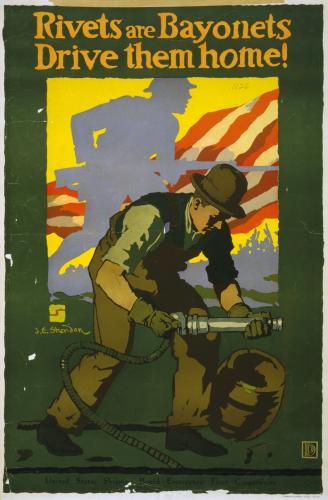Introduction
It was called “The War to End all Wars,” but as history has shown us the First World War did not end anything, instead it began a revolution in industry. As the name, “The First World War” implies, it was the first step in a series of dramatic changes. The events of World War I directly led to the start of World War II, but it was also the first time a significant number of women worked in male-dominated jobs such as factory workers. Women in factory work doubled in Connecticut during World War I because of the number of men being drafted for the Army. The new freedoms that women were experiencing eventually led to Women’s Suffrage in 1920. During the war, these women were making gun barrels, Cavalry swords, ammunition, and many other war materials. As soon as the Great War began in 1914, war orders started to roll in from the British and French governments for machine guns, pistols, and many other weapons. The already large number of manufacturers in Connecticut like Colt and Landers, Frary & Clark could not keep up with the war demand. They needed to expand their factories and workforces to continue to profit from this explosion of business. When the United States entered the war in 1917, it only increased the demand for artillery shells, guns, and other war products. The First World War led to an industrial expansion in Connecticut and around the nation that paved the way for the similar expansion that would come during World War II. New factories were popping up around the state and women became more and more essential to companies like Colt. The Great War forever changed the face of industry both in the sheer scale of manufacturing and the diversity of workers in the factories.
David Drury, Hartford in World War I.

